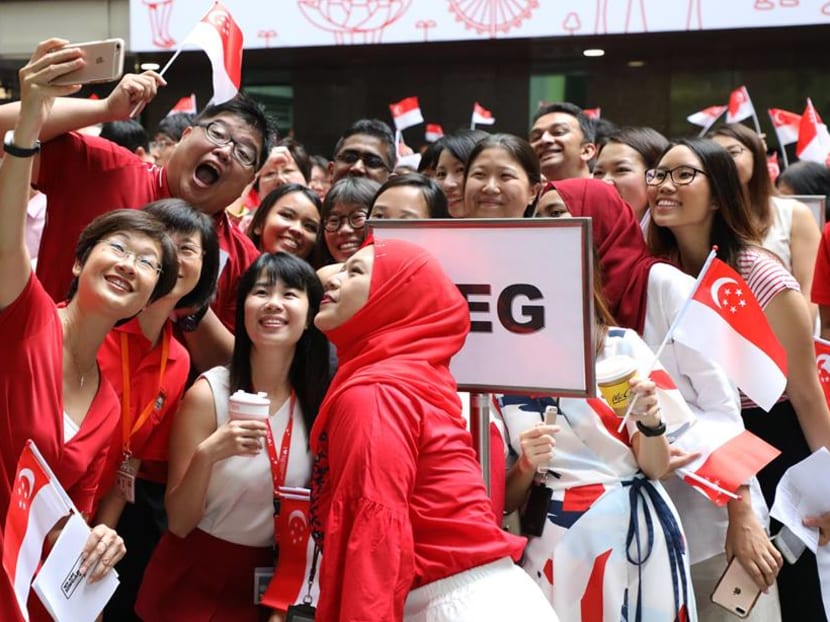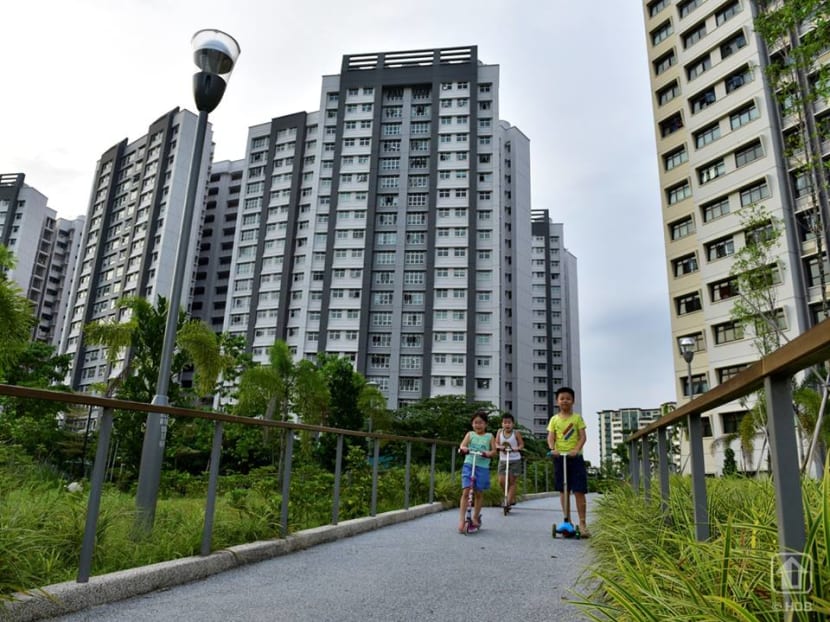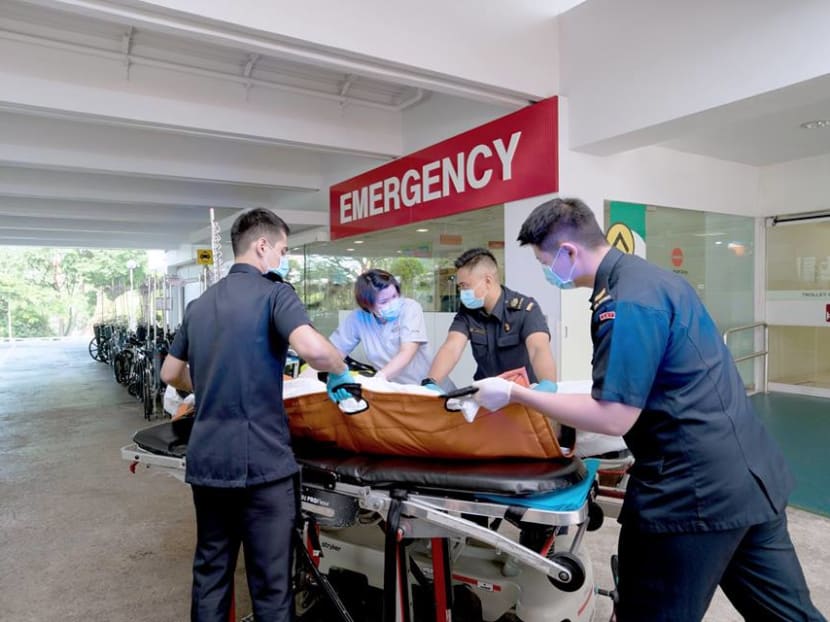Long term planning necessary for Singapore to thrive
While politics and governance around the world are becoming more short term and populist, Singapore must continue to build for the long term as it is the only way that a small state can survive, said Education Minister Ong Ye Kung on Friday (Sep 14). Speaking at the opening of the Singapore Summit, Mr Ong outlined four ways – building new economic engines, supporting an ageing population, enhancing infrastructure and housing and improving the education system – in which the country is remaking itself over the next few decades.

Mr Ong says Singapore is entering a new era in education, reinventing the way it prepares its young for adulthood and beyond under a long-term endeavour.
While politics and governance around the world are becoming more short term and populist, Singapore must continue to build for the long term as it is the only way that a small state can survive, said Education Minister Ong Ye Kung on Friday (Sep 14). Speaking at the opening of the Singapore Summit, Mr Ong outlined four ways – building new economic engines, supporting an ageing population, enhancing infrastructure and housing and improving the education system – in which the country is remaking itself over the next few decades. Below is his speech.
Welcome to the Singapore Summit. And to all our overseas guests, I hope you will have an enjoyable stay in Singapore.
This year’s conference is taking place in fairly tumultuous times. We are discussing topics concerning disruptions and the digital economy, geopolitical risks and challenges in Asia Pacific, and the future role of businesses.
The tone is quite clear: The world is going to be fundamentally different – and we need to understand, and more importantly, we need to be able to respond to these trends.
Tonight, to kick start the conference and our dialogue, I would like to share a few key preoccupations of the Singapore Government in this different world.
I will focus on the long term – worries that will be with us for many years to come.
And followed by answering one of the favourite questions Singaporeans like to ask: ‘What is the Government going to do about this?’
As a small state with no natural resources and hinterland, we must always take a long term perspective. In fact, it is just about the only way a small state can have a long term. I will touch on four areas tonight.
NOT DONE BUILDING SINGAPORE
The first is to keep our city refreshed and vibrant. In the coming decades, I believe competition is less likely to be between countries, but more likely between cities.
With more competitors in the fray, we must double our efforts to remain on the leading edge.
To enhance our infrastructure, we are doubling the capacities of our airport and seaport. We are building a new airport in the East – Changi Terminal 5, and a megaport in the West, at Tuas. The Tuas seaport will allow us to relocate our container terminals in the city all the way to the West.
This will free up almost 1,000 hectares of prime land in our southern waterfront, probably creating about 30km of extra space – three times the size of the current Marina Bay, or 1.5 times the size of Manhattan Island.
This will lift the constraints to further expand our Central Business District.
In addition, we are developing three business districts outside of the current Central Business District – Woodlands in the North, Punggol in the North-East, and Jurong in the West. This will better spread out activities across the city and even out transport demand.
We will also be relocating Paya Lebar Airport, a military airport in the middle of the island, to Changi, freeing up another 800 hectares of land for future redevelopment.
Another major area of redevelopment is our public housing estates.
80 per cent of Singaporeans live in public housing, and most of the earliest ones – including entire residential towns – were built in the 1970’s. The flats were sold on 99 year leases, and are around 50 years old now.

Photo: Facebook / HDB
Housing is a core compact between the people and the Government of Singapore. We cannot allow entire residential towns to become old and run down.
That will reduce the quality of life, potentially segregate the population, and drive down home values for our people.
So we have committed to upgrade the homes every 30 years, at highly subsidised rates.
When the flats are around 70 years old, the Government will offer residents the option to buy back their flats and redevelop the entire estate.
We will do this progressively, precinct by precinct, across each residential township. These are plans that will span the next 50 years.
NEW ECONOMIC ENGINES
Second, we need to build new economic engines.
Foreign Direct Investment (FDI) has been a major part of Singapore’s growth model. We set up the Economic Development Board (EDB) to attract multi-national companies (MNCs), which build up a manufacturing base and drive exports here.
We have a compelling proposition for MNCs – rule of law, zero tolerance for corruption, a safe and stable environment, hardworking and skilled people, harmonious tripartite relations among unions, employers, and the Government, and good infrastructure to bring their exports to the world.
This FDI model remains important, but we think it is no longer sufficient.
Our economy is maturing and we are already pushing the limits of our land and manpower resources. In the meantime, technology is advancing rapidly, and our region – South-east Asia, China, India – has become a booming market.
For our next phase of economic development, we must embrace innovation, develop new products and services, and nurture Singapore-based companies to venture into the region and the world and tap into the vast markets around us.
So from making things to creating things; from bringing in FDI to venturing out to the world. It is a major shift in economic strategy.
To support this, we have been attracting R&D centres and laboratories into Singapore, and patiently investing in R&D.
These centres and labs are at the frontiers of technology, delivering innovation which has the potential to be commercialised, spun-off into enterprises which can grow and create jobs.
What is our new value proposition? Sustained investment in R&D as a priority, world class universities, one of the top intellectual property regimes in the world, a conducive living environment, a well-educated local talent pool, and a well-regulated yet enterprise-friendly environment.
We also have a network of Free Trade Agreements – with Asean, United States, China, India, Korea, Japan, Australia, New Zealand. We’ve done well.
Today, Google is working on its next billion-customer project from Singapore. Grab has its global innovation hub at National University of Singapore.
Alibaba has set up its first R&D centre outside of China here, in collaboration with the Nanyang Technological University.
PayPal has its Innovation Hub, Siemens its Digitalisation Hub, Dyson its R&D Centre, and HP its accelerator.
We have our share of home-grown unicorns. Our universities are bustling with entrepreneurial activities, and many companies are racing to ride the innovation and digitalisation wave.
This is a transformation that will take us many years ahead, into the long term.
SUPPORTING AN AGEING POPULATION
The third long term trend is an inexorable one shared by many countries – an ageing population. Singaporeans are living longer, and young couples are having fewer babies.
Today, about one in seven Singaporeans are aged 65 and above. This will rise to around one in six in 2020, one in five in 2025, and one in four in 2030.
By then, the number of Singaporeans aged 65 and above will double from 450,000 today to 900,000 in 2030.
We are putting in place policies, such as raising the retirement age and introducing national legislation on re-employment, to help older Singaporeans work longer, should they want to.
Our Central Provident Fund, a defined contribution saving system, coupled with our home ownership program, ensures that most older Singaporeans have a good nest egg for their retirement.
When they move into this next phase of life, the Government will help elderly Singaporeans monetise their homes – through lease buy-back, or facilitate helping them to right size to a smaller retirement flat.

Photo: Facebook / SGH
We are also building up our healthcare infrastructure – more acute hospitals, community hospitals and elder care centres. The elderly often worries about three things: what if I outlive my savings, what if I fall really sick and incur huge hospitalisation charges, and what if I become disabled?
So in recent years, we revamped our national saving and healthcare insurance schemes to specifically address these worries and give older Singaporeans greater peace of mind.
Even so, we expect Government healthcare expenditure to grow rapidly. Today healthcare is the third highest area of Government expenditure after defence and education, and it will likely overtake education in the next few years.
To fund increased healthcare expenditure, we announced this year during our Budget that we will raise the Goods and Services Tax from 7 per cent to 9 per cent after year 2020, when the additional revenues will be needed.
We have a duty to give early notice to Singaporeans and explain the rationale – that we need to ensure fiscal sustainability for the long term.
A QUIET REVOLUTION IN EDUCATION
Finally, all roads lead to education. The work in education is always long term by nature, and our Ministry of Education’s mission is ‘to mould the future of Singapore’.
Whatever changes we make in schools today, we will not see the effects, until maybe 20 years later.
These effects can be profound, influencing an entire generation. What are the changes we are making today that will affect a whole new generation in the next 30 years?
First, with rapid technological advancements and industry disruptions, learning is no longer a matter of 15 or 20 years in your early years, but part and parcel of our lives.
Further, as knowledge becomes more accessible and learning is lifelong, there is less need to frontload knowledge transmission during the formative education years.
Increasingly, it is human skills, including essential soft skills, that carry a premium. You can Google knowledge, but it is hard to Google skills, experience and knowledge. Finally, because a lifelong pursuit of learning and knowledge is not easy, we must cultivate curiosity and passion in our students, to drive their desire to learn for life.
So we launched a national movement, called SkillsFuture, to promote these ideas.
We consolidated all functions related to education from cradle to grave – pre-school education, skills training for adult workers – all under the Ministry of Education.
We instituted a systemic process to help our young, starting from primary school, to progressively discover their strengths, grow their interests, and guide them on possible career paths.
At the post-secondary level, we have a developed a system of multiple pathways to cater to students with diverse talents and strengths.
And as they move into the workforce, we have a comprehensive system to meet their upgrading needs.
Our tertiary institutions, having assumed a new mandate for lifelong learning, are transforming themselves as well. Polytechnic and university education have moved away from didactic teaching in lecture halls, to become a lot more experiential – students do social work, internships, project work, and cross-cultural exposures.
The National University of Singapore has declared enrolment to be for 20 years – four years to attain a degree, and many more years of returning to campus to update your knowledge and skills.
Institutions are admitting students based on their passions and talents, and not just their academic grades.
We still have a lot of work to do. We probably have to move even further away from extensively rigorous academic teaching and assessments, towards applied learning, cultivating creativity and critical thinking.
We need to emphasise less on examination scores. We need to deliver differentiated teaching, while ensuring all students have a mindset of growth and achieving excellence.
We are entering a new era in education, reinventing the way we prepare our young for adulthood and beyond, and this is a long-term endeavour.
I have outlined four ways in which we are remaking the Singapore state – the way we build our city, work our economy, transit to a much older population, and educate our young to give them the tools to pursue a good and fulfilling life.
All these are long term plans that will last 20 to 30 years or more. These are some responses to a changing world.
All around the world, politics and governance are becoming more short term and populist. It is hard to explain this trend.
Perhaps social media is breeding more angst and impatience amongst people. Perhaps online falsehoods are dividing societies, and creating national security issues.
Perhaps big data is changing politics, from an art of a long term search for the better life, to an auction for short term euphoria.
But in Singapore, we have chosen to keep our orientation firmly towards building for the long term.
It is the only way that a small state can survive and do well.
I look forward to an engaging and insightful dialogue. Thank you.






